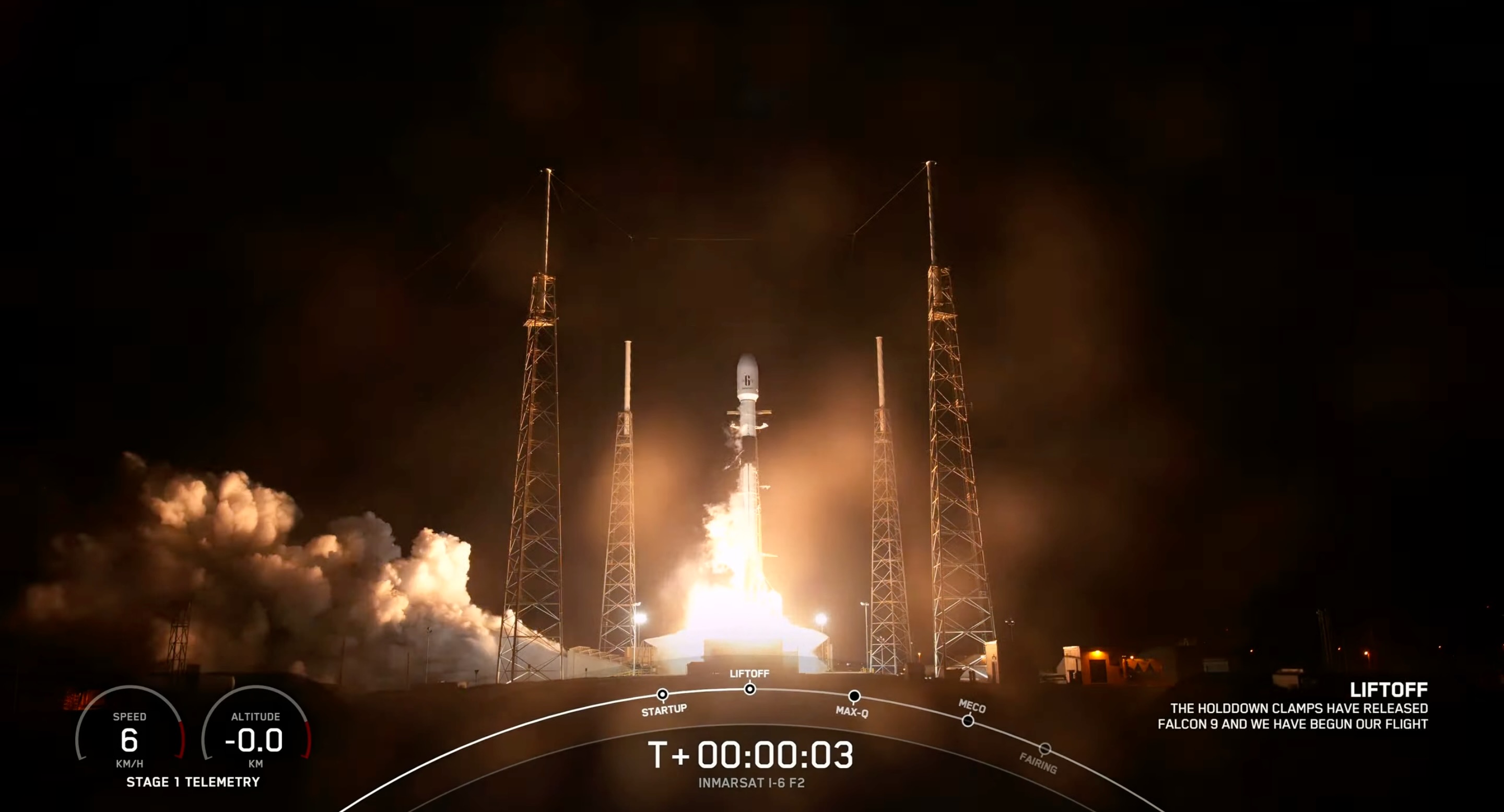SpaceX pulled off a launch doubleheader on Friday (Feb. 17).
A Falcon 9 rocket lifted off from Cape Canaveral Space Force Station in Florida on Friday at 10:59 p.m. EST (0359 GMT on Feb. 18), carrying the I-6 F2 spacecraft aloft for British satellite communications company Inmarsat.
It was SpaceX's second orbital mission in less than nine hours; earlier on Friday, a Falcon 9 lofted 51 of the company's Starlink broadband satellites from Vandenberg Space Force Base in California.
Related: 8 ways that SpaceX has transformed spaceflight

The first stage of the Falcon 9 that launched I-6 F2 came back to Earth as planned, acing its landing on the SpaceX droneship Just Read the Instructions about 8 minutes and 40 seconds after liftoff. It was the third launch and landing for this particular booster, SpaceX wrote in a mission description.
The Falcon 9's upper stage, meanwhile, continued powering its way to orbit, eventually deploying the I-6 F2 satellite about 32 minutes and 20 seconds after liftoff.
Deployment occurred at an altitude of about 404 miles (650 kilometers), meaning I-6 F2 still has a long journey ahead of it. The 12,000-pound (5,500 kilograms) satellite will make its way to geostationary orbit, about 22,200 miles (35,700 km) above Earth. From that perch, it will provide connectivity for ships and aircraft in the Atlantic Ocean region, according to Inmarsat.
Get the Space.com Newsletter
Breaking space news, the latest updates on rocket launches, skywatching events and more!
I-6 F2 is the second of two I-6 satellites to reach orbit. The other, I-6 F1, launched atop a Japanese H-IIA rocket in December 2021 and currently services the Indian Ocean region.
Today's back-to-back launches didn't set a new record for SpaceX, by the way. On Oct. 5, 2022, the company launched the Crew-5 astronaut mission to the International Space Station and a batch of Starlinks a little over seven hours apart.
SpaceX has now launched 12 missions already in 2023. And there will doubtless be many more; company founder and CEO Elon Musk said last summer that SpaceX could launch up to 100 missions this year.
Editor's note: This story was updated at 5:25 p.m. ET on Feb. 17 with news of the success of the first SpaceX launch of the day, then again at 11:45 p.m. ET with news of the second successful launch.
Mike Wall is the author of "Out There" (Grand Central Publishing, 2018; illustrated by Karl Tate), a book about the search for alien life. Follow him on Twitter @michaeldwall. Follow us on Twitter @Spacedotcom or Facebook.
Join our Space Forums to keep talking space on the latest missions, night sky and more! And if you have a news tip, correction or comment, let us know at: community@space.com.

Michael Wall is a Senior Space Writer with Space.com and joined the team in 2010. He primarily covers exoplanets, spaceflight and military space, but has been known to dabble in the space art beat. His book about the search for alien life, "Out There," was published on Nov. 13, 2018. Before becoming a science writer, Michael worked as a herpetologist and wildlife biologist. He has a Ph.D. in evolutionary biology from the University of Sydney, Australia, a bachelor's degree from the University of Arizona, and a graduate certificate in science writing from the University of California, Santa Cruz. To find out what his latest project is, you can follow Michael on Twitter.









